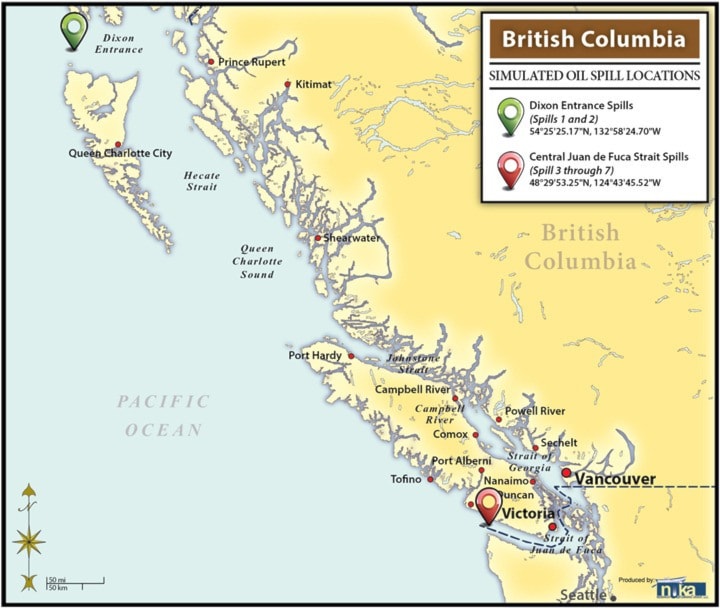VICTORIA – The B.C. environment ministry has released its promised study of the current state of crude oil spill response capability, tracking the growing tonnage of petroleum shipping along the West Coast and estimating response time and effectiveness if oil was to spill at sea.
Oil recovery in computer simulated oil spills could be as high as 25 per cent after five days, or as low as four per cent for Alaska crude, with another quarter evaporating.
The study was commissioned to back up Premier Christy Clark's conditions for B.C.'s approval of expanded heavy oil shipments, either from twinning the TransMountain pipeline from northern Alberta to Burnaby, or the proposed Enbridge Northern Gateway project across northern B.C. to a new tanker port at Kitimat.
Environment Minister Mary Polak said the study shows the need to increase response capability before the B.C. government would consider increased oil shipments.
"While we respect federal jurisdiction over marine spills, we must ensure B.C.'s interests are being met, and that means adding more resources to protect our coast," Polak said.
The three-volume report also details the huge and growing traffic that exists now.
Shipping data show a 17 per cent increase in marine traffic volume from 2011 to 2012. An estimated 110 million cubic metres of petroleum products per year are shipped, about a third of which is crude-like bunker oil carried as fuel on ships of all kinds. The biggest tanker cargo is 38 million cubic metres of mostly Alaska crude a year.
The study includes recovery estimates for seven oil spill scenarios, six of which assumed a spill of Alaska North Slope crude that has been shipped by tankers down the B.C. coast to U.S. refineries since the 1970s. Two scenarios involve an Alaska crude spill in Dixon Entrance, with four per cent recovery in summer an three per cent in winter.
One scenario examines a summer-time spill of diluted bitumen in the Juan de Fuca Strait, with response from Canadian and U.S. ships and oil recovery equipment. It estimated 31 per cent oil recovery after five days, in summer conditions with daylight-only operations.
Tanker shipments from Kinder Morgan Canada's Burnaby terminal hit a high of 69 in 2010. some of which were diluted bitumen. The expansion would mean 300 tankers a year in and out of Vancouver harbour.
The federal government has launched its own research project to model the drift and behaviour of a bitumen spill in the ocean around Kitimat, and funded marine weather forecasting to facilitate shipping.
